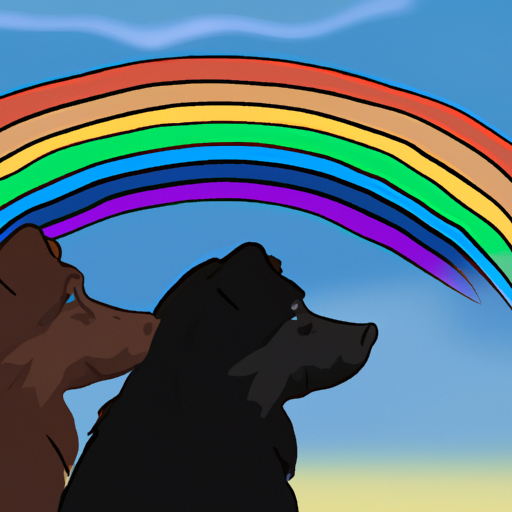Understanding Dog Vision
You’ve probably wondered at some point, “What color does my dog see?” Perhaps you even bought your fluffy friend a brightly colored toy, hoping it would appeal to their visual senses. However, the world through your dog’s eyes is different from what you might imagine.
Contrary to popular belief, dogs don’t see the world in black and white. Their color vision is limited compared to ours, but they are not completely color-blind. The science behind this is both fascinating and complex.
The Science Behind Dog’s Color Vision
Before we dive in, let’s remember a bit about human vision. Remember, as a human, you have three types of color receptors, or cones, in your eyes – red, blue, and green. These cones allow you to see a full spectrum of colors.
Now, let’s consider your dog’s eyes. Dogs only have two types of cones – blue and yellow. This means their color range is limited. They can see shades of blue and yellow, but not red or green. To a dog, a green grassy field may appear as a dull yellow-brown, and a red ball might look like a very dull brownish-gray.
Here is a simplified table to illustrate the differences:
| Human Vision | Dog Vision |
|---|---|
| Red | Dull Brown-Gray |
| Green | Dull Yellow-Brown |
| Blue | Blue |
How This Affects Your Dog’s Daily Life
You might be wondering, “How does this color vision affect my dog’s daily life?” Well, it impacts them in several ways:
- Toys: You might want to rethink the color of the toys you buy. A red ball on green grass is easy for you to see, but for your dog, those colors are both dull and indistinguishable. A blue ball might stand out more for them.
- Training: If you’re training your dog, the color of training tools could make a difference. Blue or yellow tools might be more effective.
- Emotion: While not proven, some speculate that dogs might have emotional responses to different shades. This could influence their mood and behavior.
Tips for Dog Owners
Given this information, here are some tips to help your dog navigate their world:
- Choose toys in colors they can see, like blue and yellow.
- Use these colors in training tools for better visibility.
- Be mindful of color when setting up their living space.
Frequently Asked Questions
Q: Do all dogs see the same colors?
A: Most dogs see similar colors, but it can vary slightly based on breed and individual health.
Q: Are there any dog breeds that can see more colors?
A: Currently, there’s no scientific evidence to suggest any one breed has superior color vision.
Q: Can dogs see in the dark better than humans?
A: Yes, dogs have a special layer in their eyes that helps them see better in low light.
Now you know a bit more about how your canine companion views the world. Understanding their perspective can help you make insightful decisions for their care and happiness. It’s another step towards creating a better, brighter world for your furry friend.



